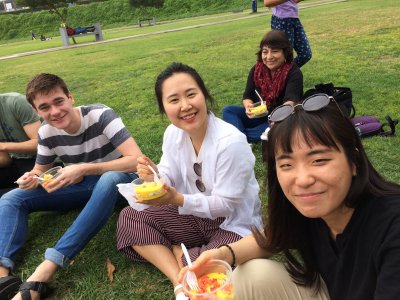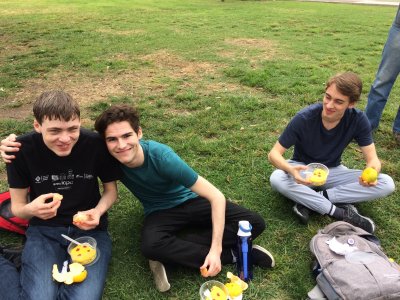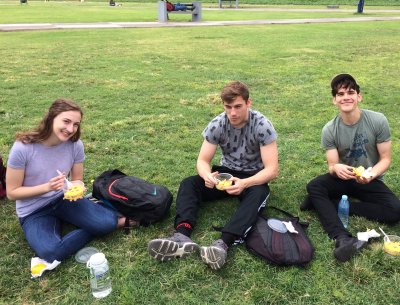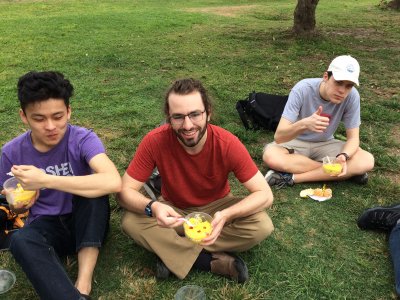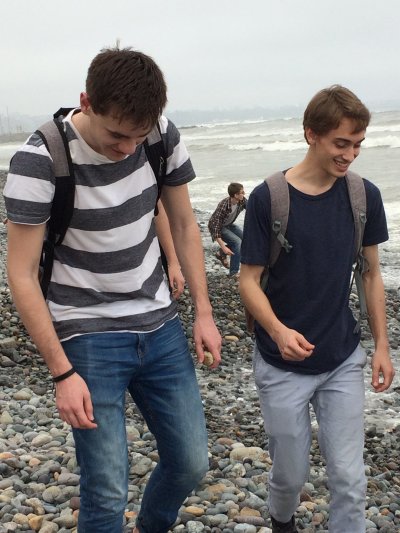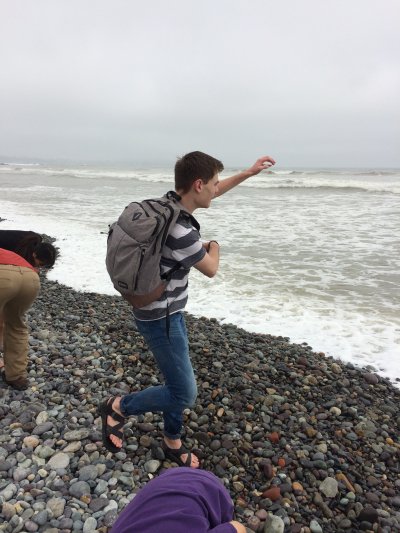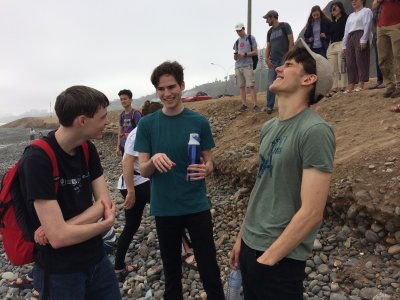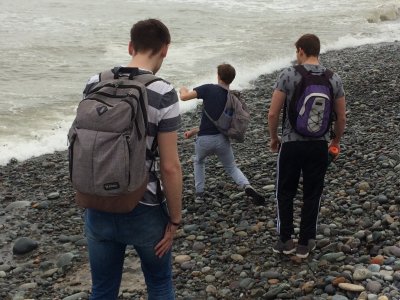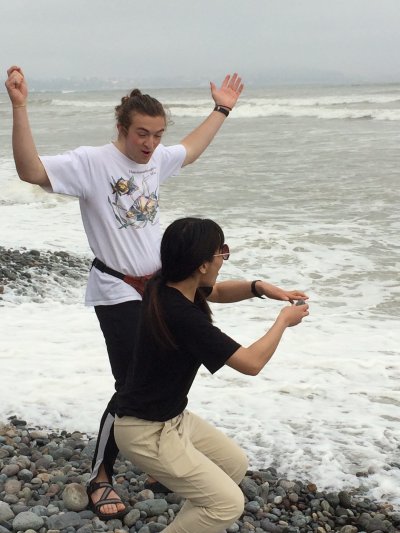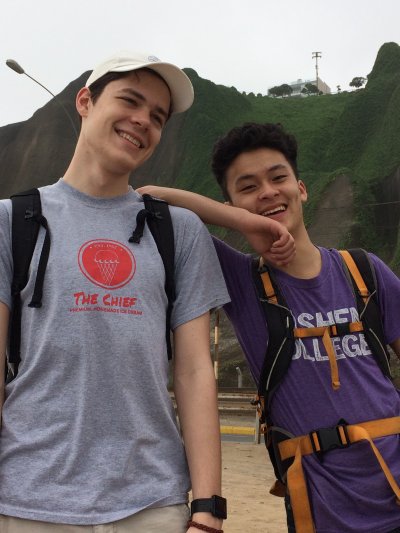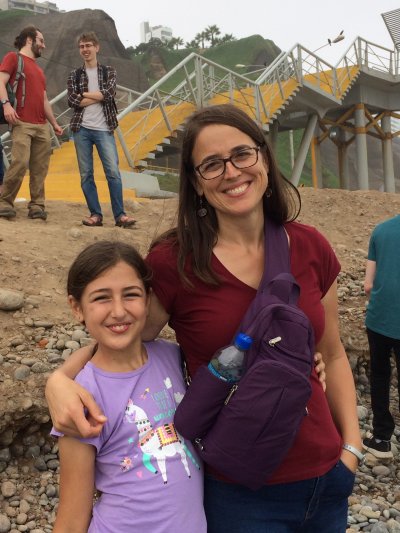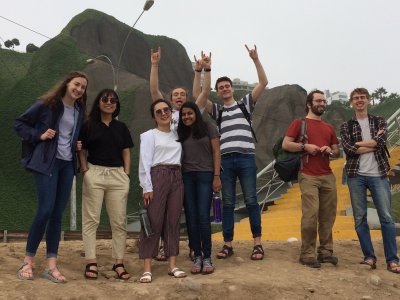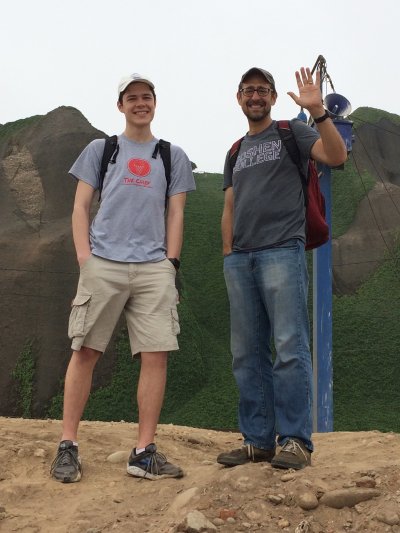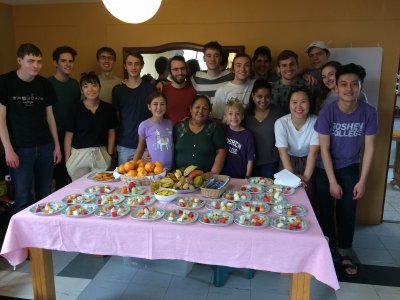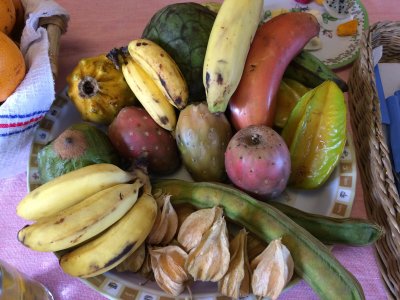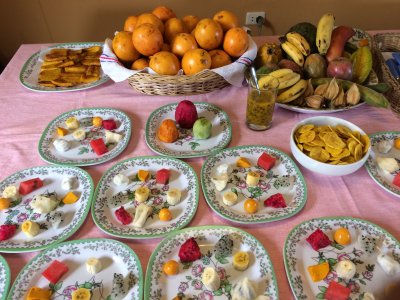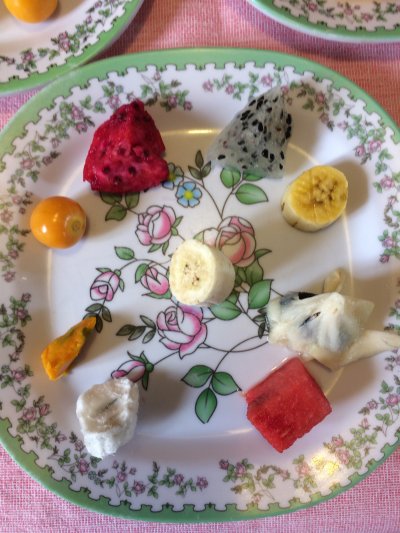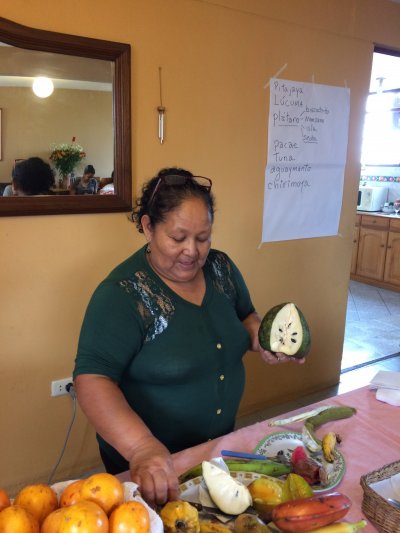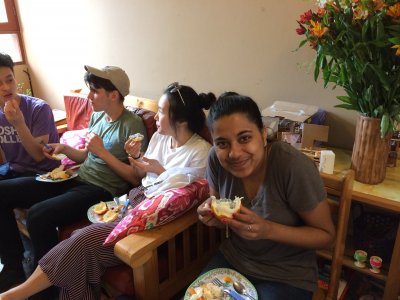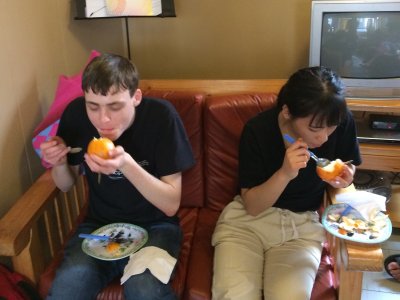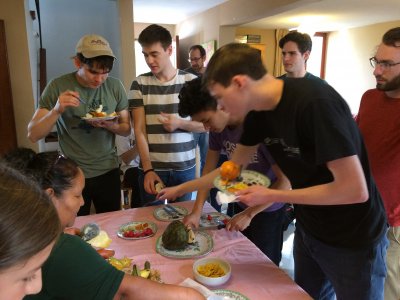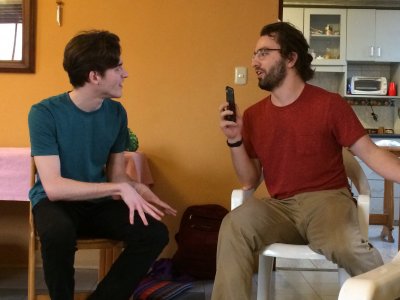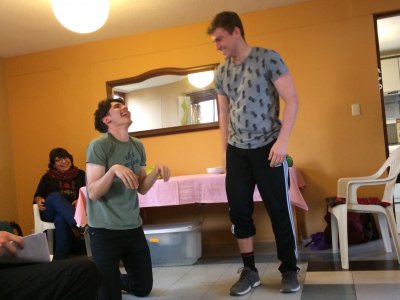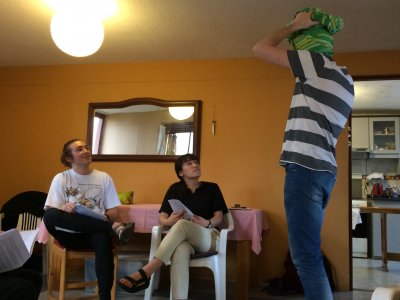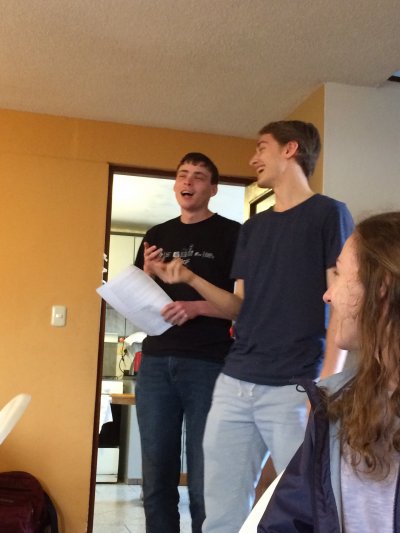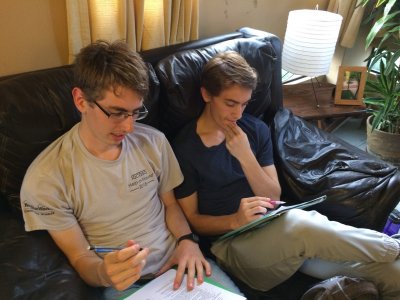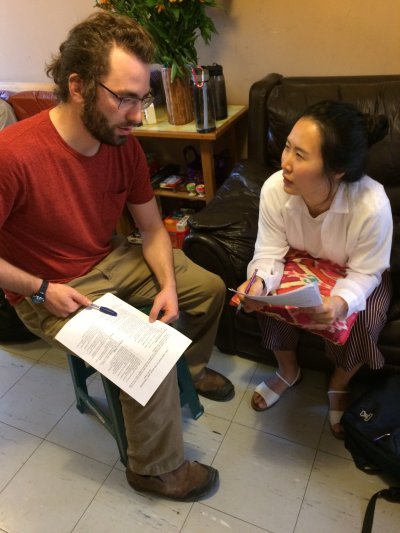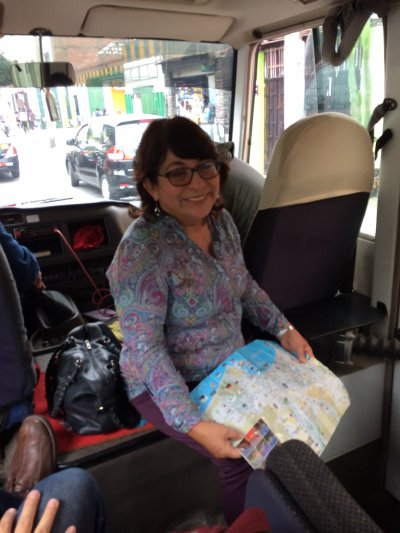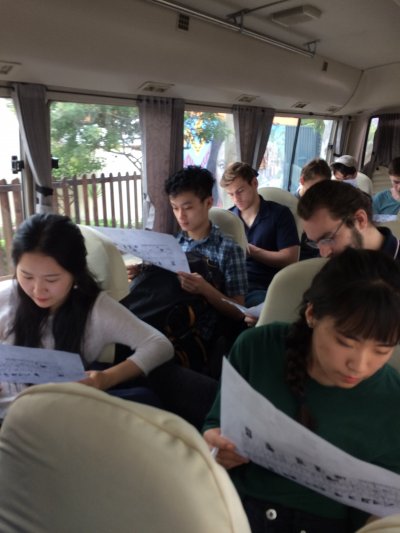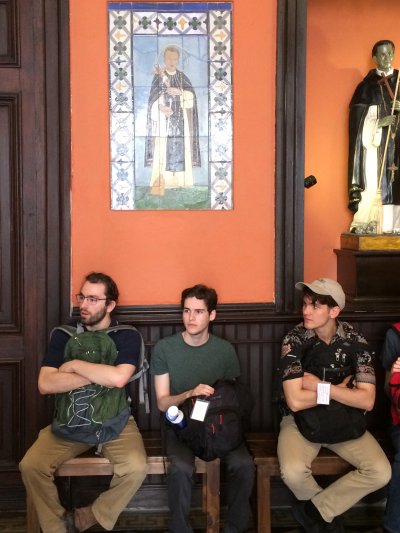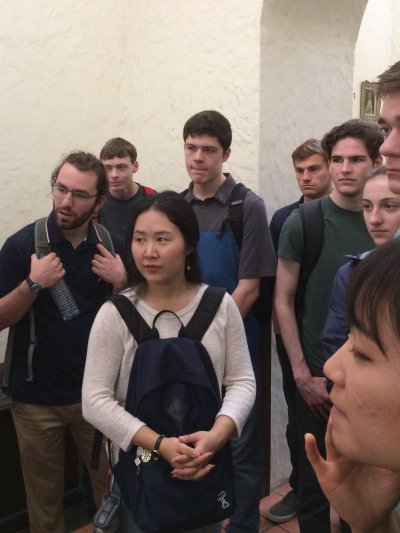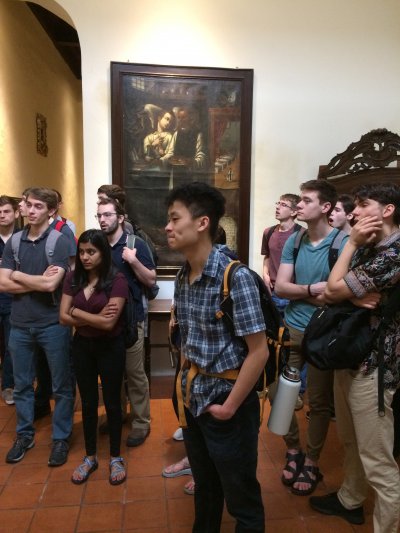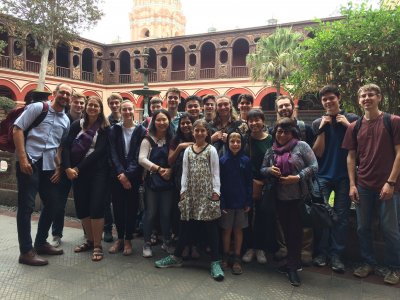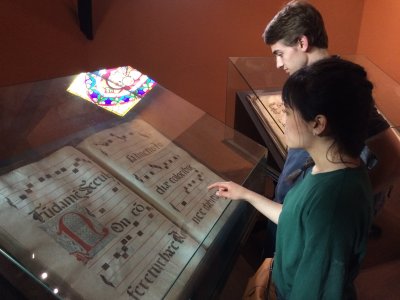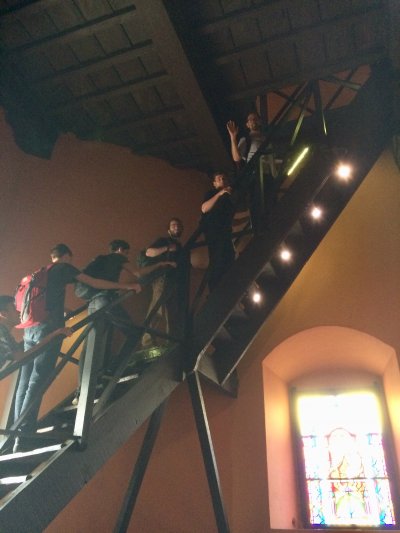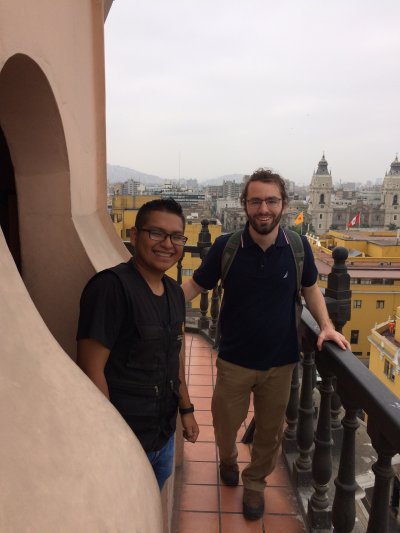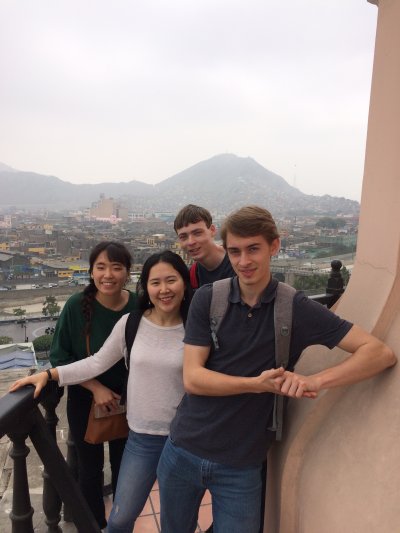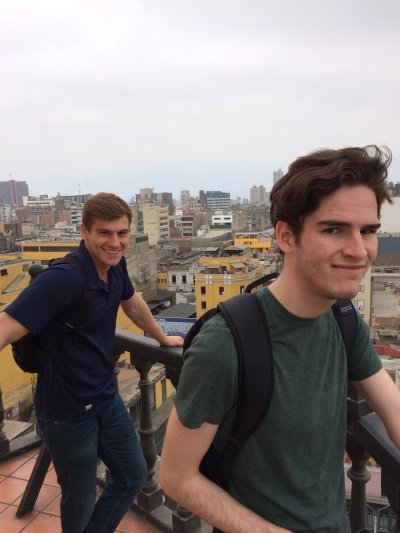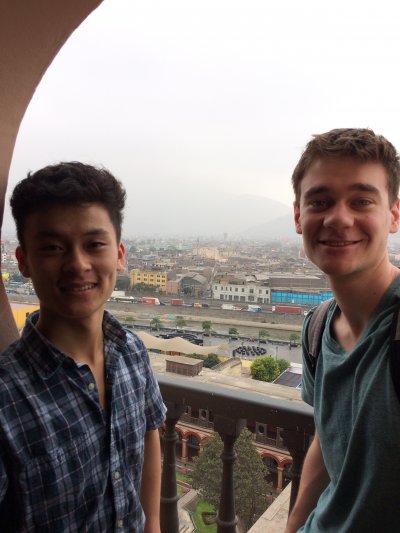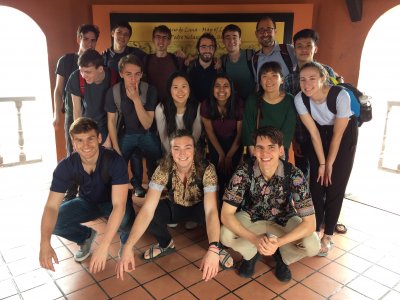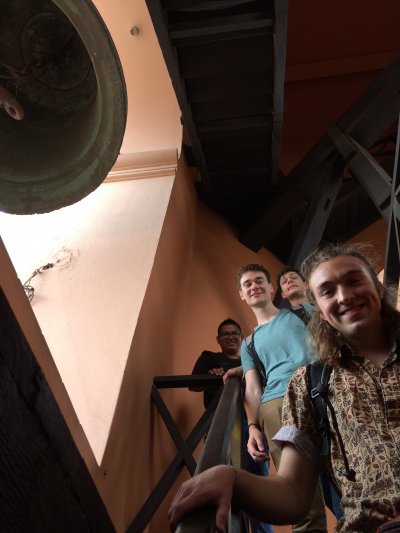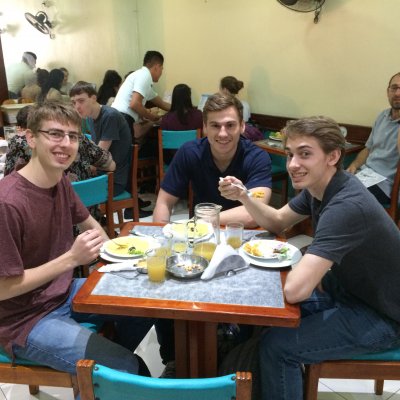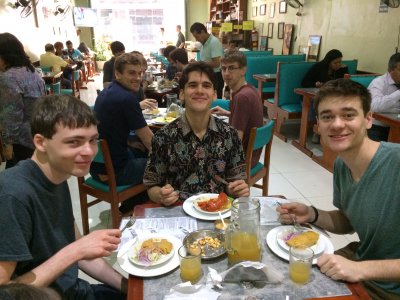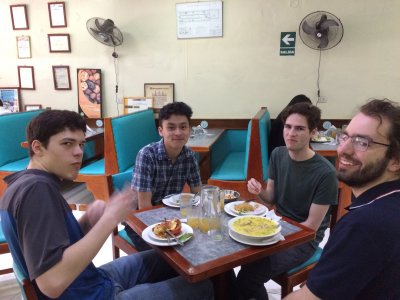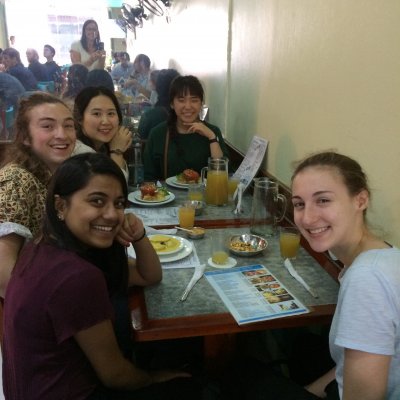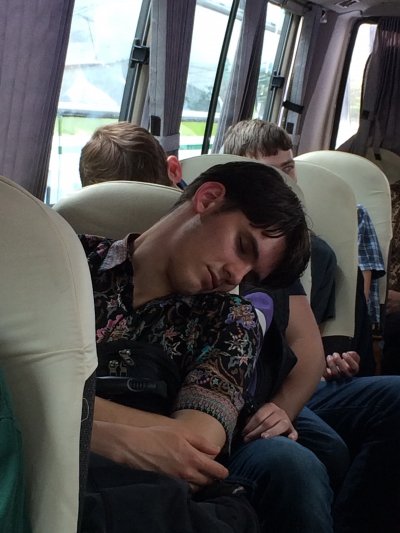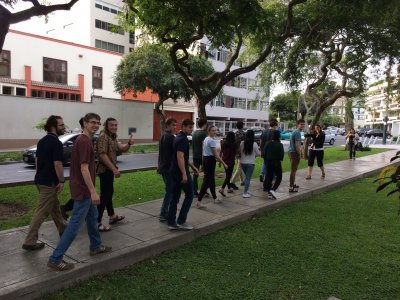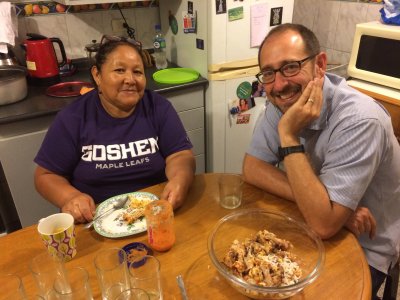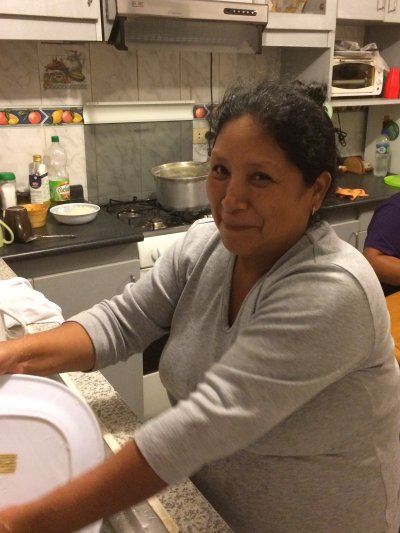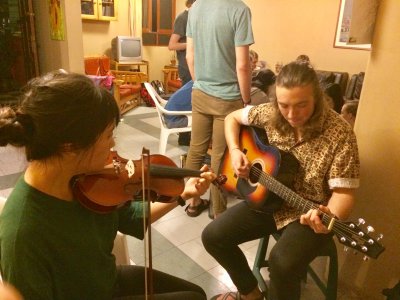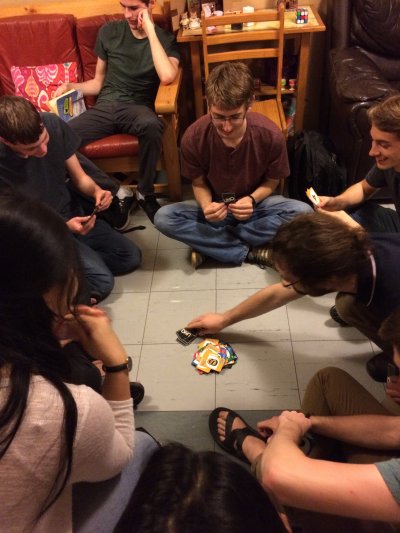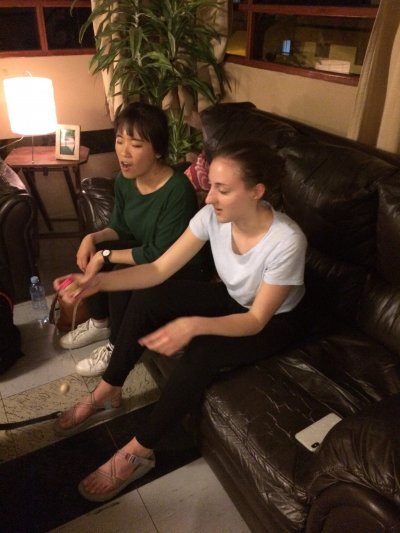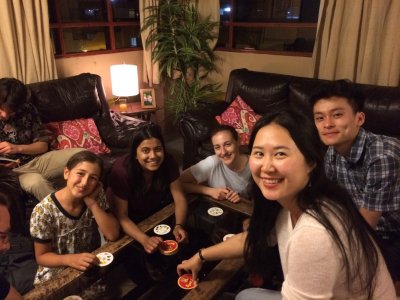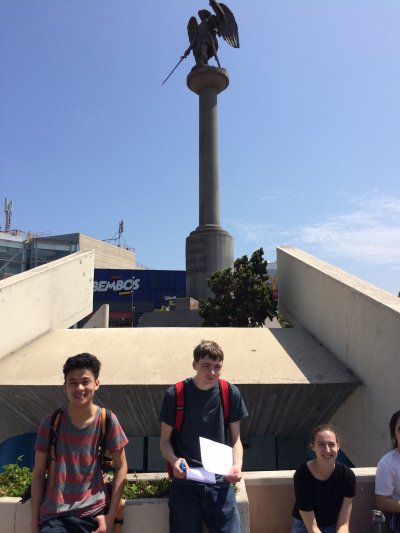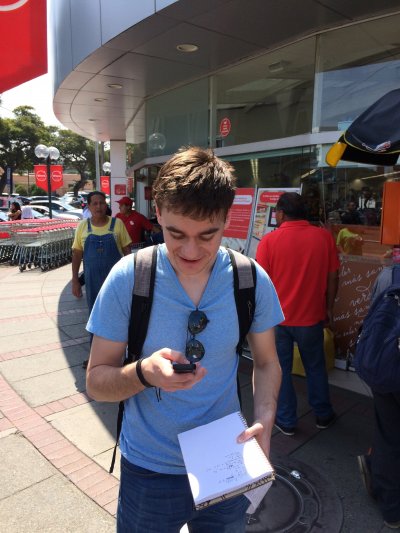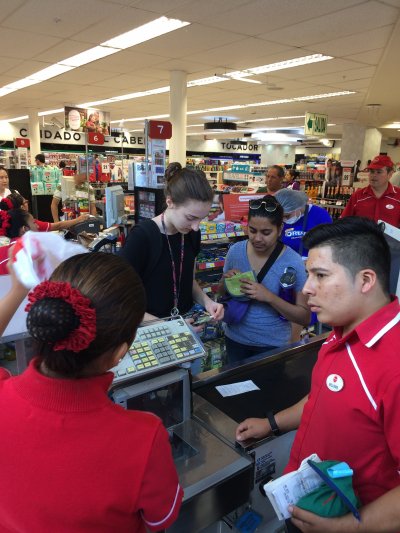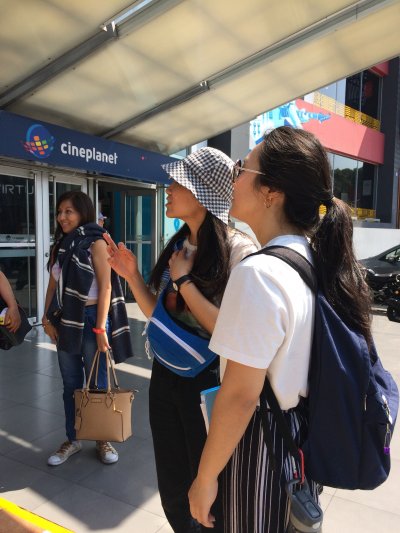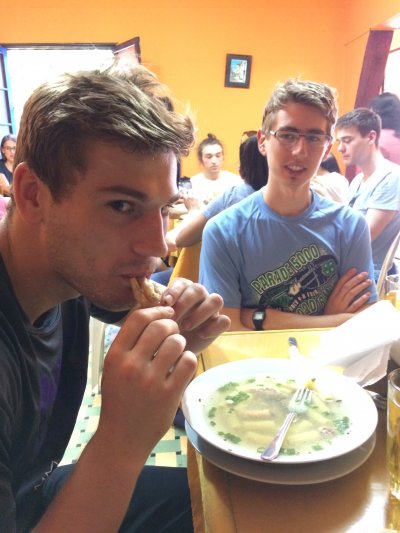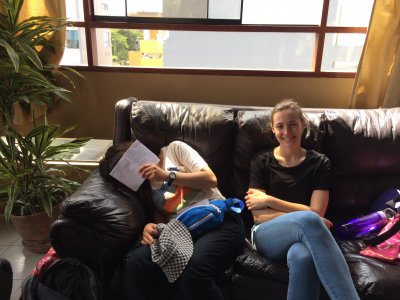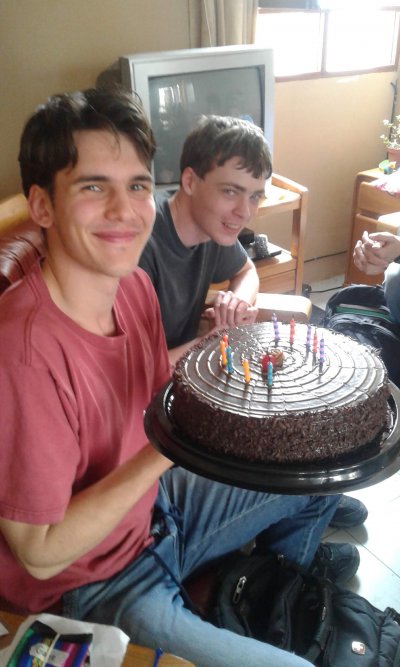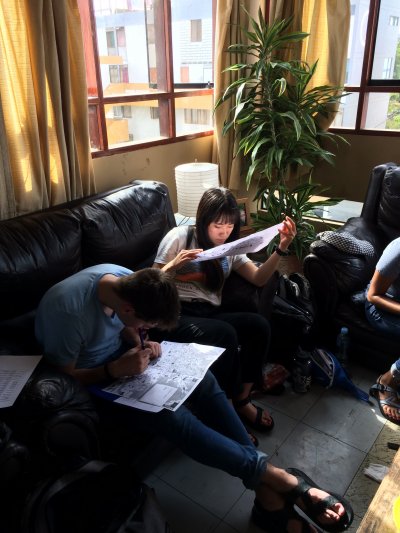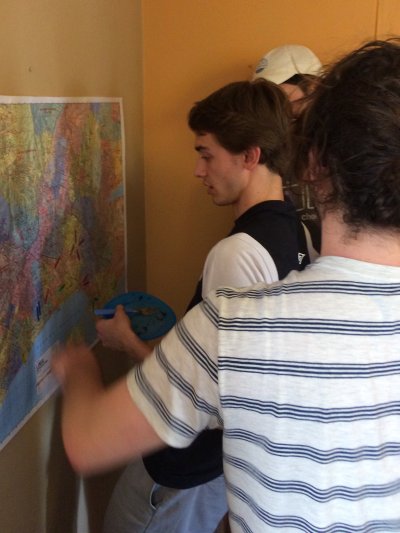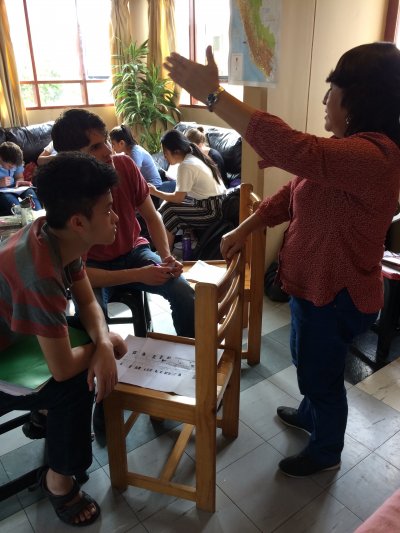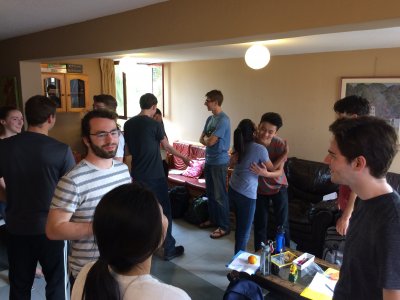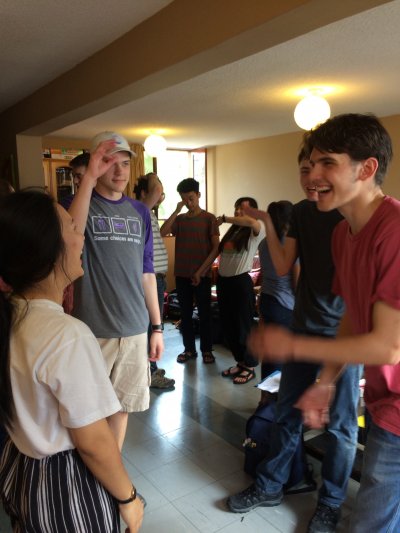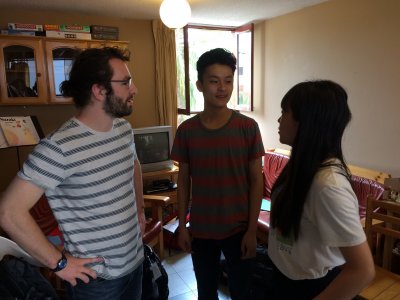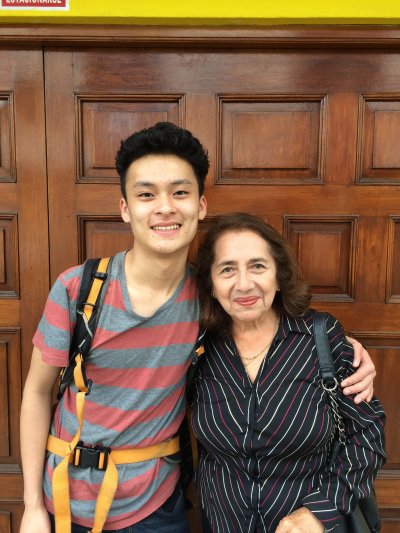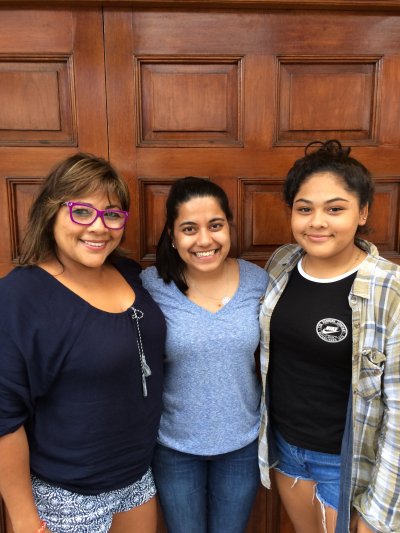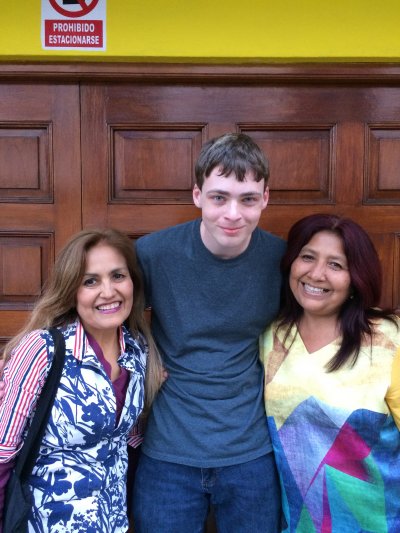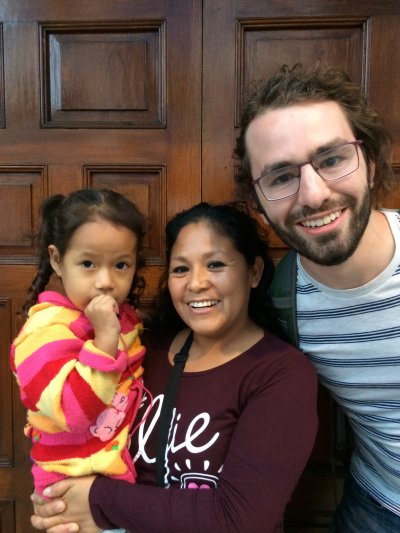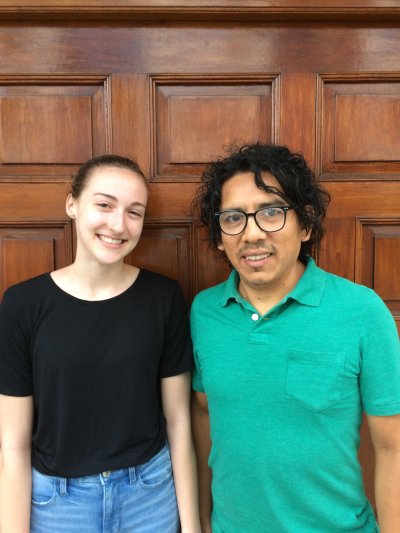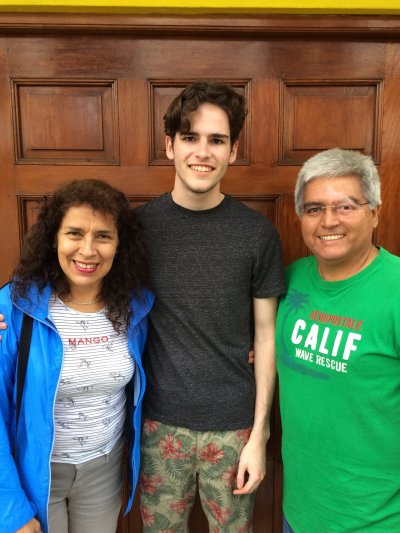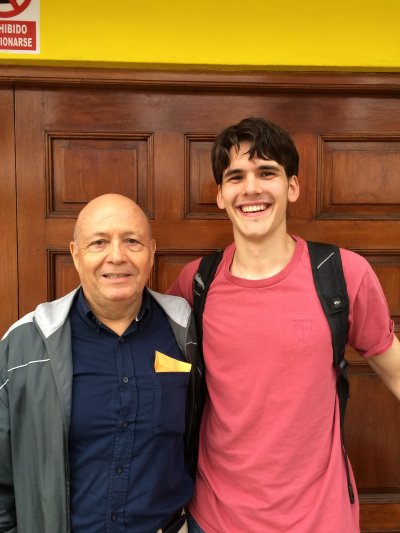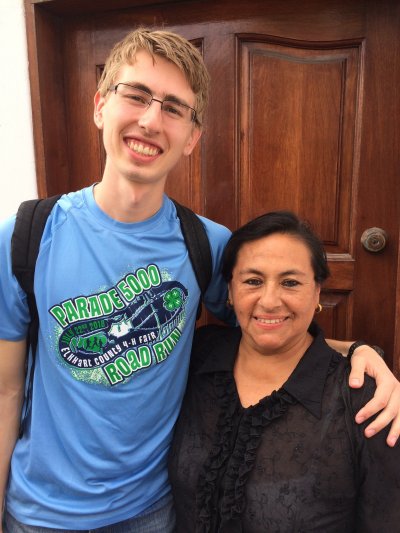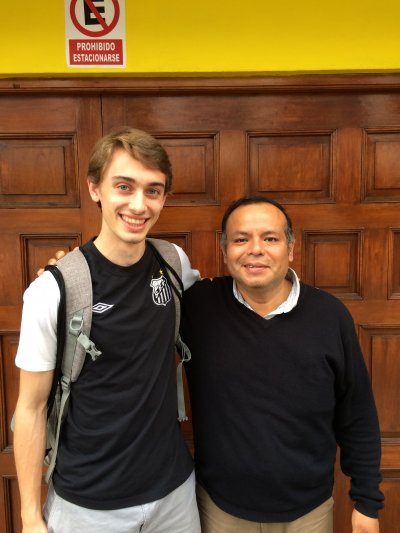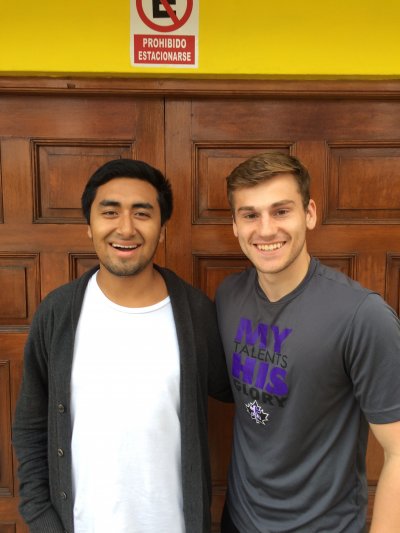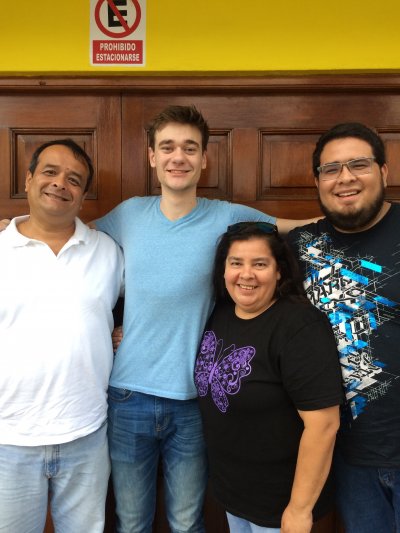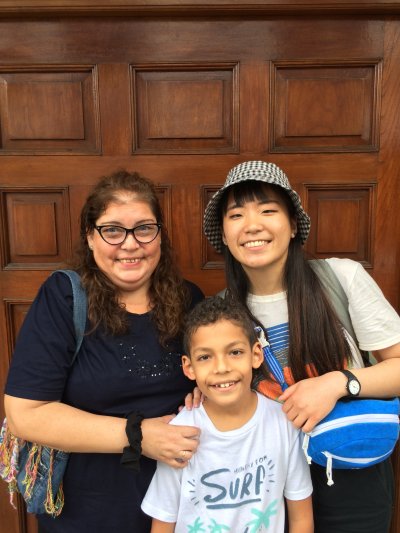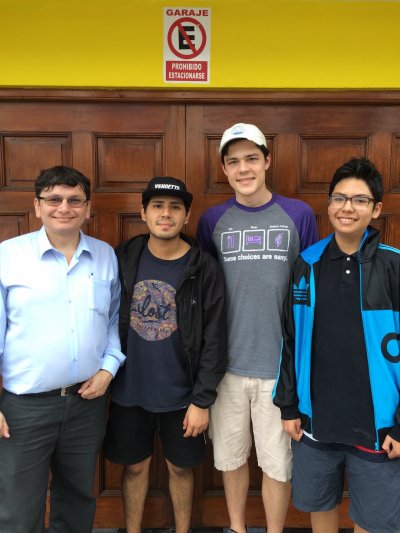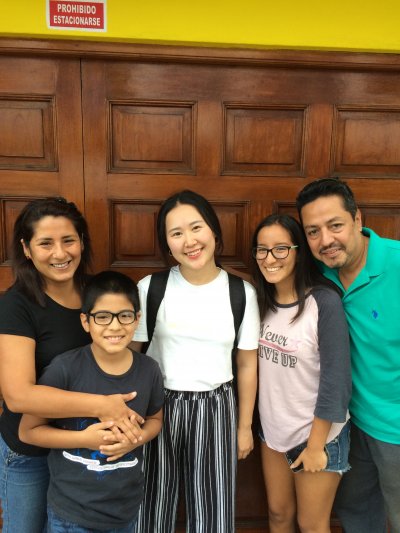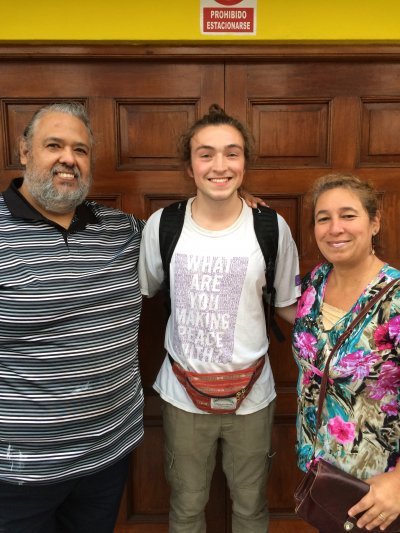Orientation? Check!
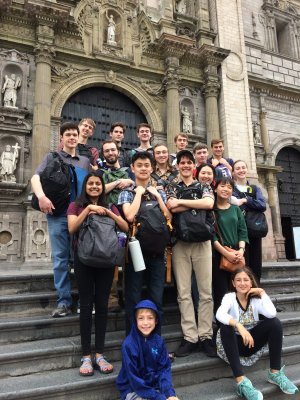
Students enjoyed a packed three days of orientation activities to get them ready for their new lives in Lima. In addition to seeing some of the sights of Lima, they had a chance to take a ride on public transportation, make purchases in a new currency, and get their Spanish skills into gear. It was a lot to take in, but they managed it with confidence and are ready to meet the challenges and wonders that await them this semester.
Day 1 — Thursday
After a good night’s sleep, students headed out walking from the hostel which is just a short walk from Casa Goshen. Our first stop was a casa de cambio (money-changing business) where each student turned some of the dollars they brought from home into Peruvian soles. Once at Casa Goshen, we did a brief overview of the components of our course of study for the semester. Students on Perú SST receive course credit for courses in Spanish language, Intercultural Communication, History and Culture of Perú, Arts and Literature, and the Natural World of Perú. Over the course of the semester, students will complete extensive reading assignments, attend Spanish classes three to four afternoons a week, write journals, take quizzes, give speeches, and complete a research project on a topic of interest in Perú.
At lunchtime, we left academics behind and took a short stroll to the malecón, a walkway and park system running along the coast of Lima. After enjoying a picnic lunch together, we took the long stairway down the cliffs and across the highway to the rocky coastline. We had a chance to listen to the waves, dip our toes in the water, and do some serious stone-skipping. After the long walk back up those stairs, we returned to Casa Goshen for a fruit-tasting prepared by Alicia Taype, GC program assistant and caterer. Students got to sample a variety of fruits grown in Peru which ranged from the subtle and creamy lúcuma, to the sour and seedy maracuyá.
During our next orientation session, students created “What’s wrong with this picture?” skits based on the information in their orientation handbooks. Students succeeded in creating many humorous and very problematic scenarios of what NOT to do when you have dinner with your host family, experience intestinal discomfort, or find yourself in a national emergency. Later in the afternoon, Lima Study coordinator Celia Vásquez gave students a True/False Quiz about Peruvian culture, where students learned about kissing on the cheek, ‘Peruvian time’, the importance of family, and the right and wrong way to enter and exit a room.
Day 2 — Friday
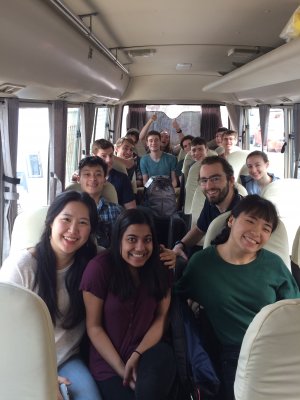
On Friday, we visited the historic center of Lima. We toured the Convento Santo Domingo, a monastery which is the burial site for Santa Rosa de Lima and San Martín de Porres, Lima’s two most venerated saints. It was also the birthplace of San Marcos University, Perú’s first university and the oldest university in the Americas. A highlight of the tour was climbing the 400 year-old stairs up the bell tower for a 360º view of the city of Lima. We finished the tour just in time to return to the Plaza de Armas to catch the ceremonial changing of the guard, which happens every day at noon outside the Government Palace. Afterward, students had their first opportunity to order lunch in a restaurant and sample a few more of the common dishes served in Perú.
Day 3 — Saturday
We spent the morning in Óvalo Gutierrez, an area near Catedral Buen Pastor where our classes are held during the study portion. Students completed a series of walking tasks in the vicinity of the Óvalo, such as asking for directions, comparing prices between international chain stores and local shops, and loading credit onto their Peruvian cell phones. They bravely completed their tasks, and now have functioning phones to make calls to their directors and host families. After eating a menú lunch at a restaurant near the Óvalo, the students learned the walking route from the church to Casa Goshen.
Once at Casa Goshen, we moved into logistical details, with information about how students will deliver payment to their families, how they will manage their transportation money and where they will be living. Students will be living in 10 different districts throughout Lima and will take various forms of public transportation to arrive at their classes every day. Students located their homes on the metropolitan map, and Celia talked with them about what their transportation to and from classes will look like. In our last orientation activity, students prepared to meet their families by practicing the pronunciation of their family members’ names and practiced greeting them in the Peruvian style.
At 4:30, we walked back to the hostal and within a few minutes, families began arriving to pick up their new sons and daughters. The students were warmly greeted with handshakes, hugs and kisses from their host families and within an hour, all students were on their way to their homes for the next five weeks. After spending the rest of the weekend getting acquainted with their host families, students will meet at the church bright and early on Monday morning for their first full day of lectures and classes.
